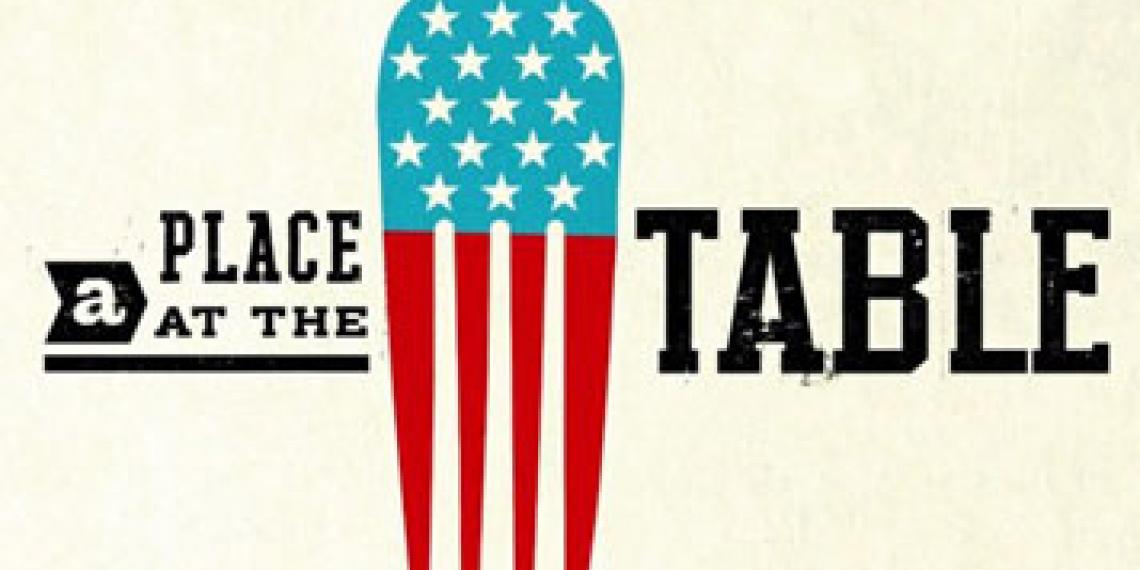You are here
Film review - A Place At The Table

From the same team responsible for the critically acclaimed film Food, Inc., A Place At The Table is a powerful and damning indictment of the growing food problems in America, where 50 million people don’t know where their next meal is coming from and welfare food stamps are an everyday necessity.
Directors Kristi Jacobson and Lori Silverbush examine the issue of hunger in America through the lens of three people.
Barbie is a single Philadelphia mother who grew up in poverty and who wants to provide a better life for her two kids. Rosie, from rural Colorado, is a child who often has to depend on friends and neighbours for food and who has trouble concentrating in school. Finally, there is Tremonica, a Mississippi child whose asthma and obesity are exacerbated by the largely empty calories her hardworking mother can afford.
Opening with beautiful shots of the American landscape showing full fields of corn, wheat, fruit and vegetables, a voice reminds us that ‘you don’t associate hunger with America’. The ranching town of Collbron where Rosie lives is described as ‘a caring, close knit community’, yet ‘almost desperate’. Here in the heart of the USA, even the town police officer resorts to getting handouts from the food bank to get by.
The terms used to describe the issues, ‘food insecurity’ and ‘food deserts’ will be unfamiliar to many. The USDA (United States Department of Agriculture) defines food insecurity as ‘consistent access to adequate food is limited by a lack of money and other resources at times during the year.’ Thirty per cent of US families have regular food insecurity. Food deserts are districts or towns with little or no access to large grocery stores that offer the fresh and affordable foods needed to maintain a healthy diet. Instead of such stores, these districts often contain many fast food restaurants and convenience stores. It’s estimated that 23 million Americans live in food deserts.
In addition, the USDA has seemingly allowed its farm-subsidy program to be hijacked by big agribusinesses specialising in corn, wheat and rice (the staples of the processed-food industry) instead of family farms. The filmmakers argue, convincingly, that this has led to a situation in which junk food is cheaper to buy than healthy fruits and vegetables. This is reinforced by a 40 per cent hike in the price of fresh produce and a matching drop in processed food costs.
But the most horrific thing is watching corporate interests block attempts to make the system better; a proposal for $10 billion to be taken from the $170 billion in agricultural subsidies and spent on improving the US school lunch program is shot down at the first Congress committee stage. In the end, the programme gets just $4.5 billion. And where does it come from? The food stamps budget.
Even more startling are the facts that the film presents: in the USA in 1980, there were 200 food banks; now there are 40,000. One in three children born in the US after the year 2000 will develop Type 2 diabetes. At some point in their lives, one in every two US children will be on some sort of federal food assistance. The average weekly budget for US school lunches equates to 90c per child per day. It all paints a sobering picture.
Overall, the film clearly shows that many are not going hungry because of a lack of food but because they can’t afford to buy the right food. This is due to poverty. So the real question is, "Why are people poor?" This of course, is a much bigger question.
On the whole, the film has a tone of intelligent, if subdued, outrage. It has some stunning cinematography by Daniel B. Gold & Kirsten Johnson and a soulful and emotive soundtrack by T Bone Burnett and The Civil Wars, which stand in stark contrast to the tough daily struggles depicted in the film. It takes approving note of efforts to educate people, showing us a classroom of kids being introduced to a honeydew melon for the first time and loving it. There is also a lot of time devoted to what the church is doing to help in this crisis, as emphasised by the weekly meal put on by a local congregation in Collbron which feeds a quarter of the town’s population.
The best documentaries challenge us by asking important questions and by spurring us into action as result. Jacobson and Silverbush’s film does just this by showing us how hunger poses serious economic, social and cultural implications for the wealthiest nation on earth, and that it could be solved once and for all, if the American public decides (as they have in the past) that healthy food is made more affordable and available.
Highly recommended.
Review by Martin Barratt
A Place At The Table
Genre: Documentary
Directors: Kristi Jacobson and Lori Silverbush
Rating: E (Exempt)
Run time: 1 hour 24 mins